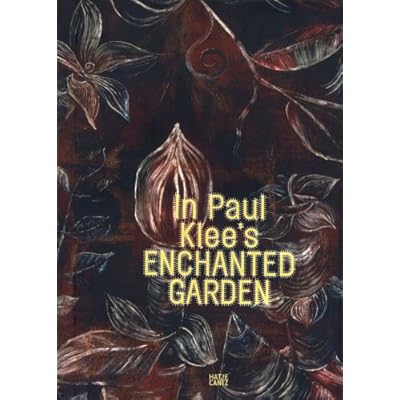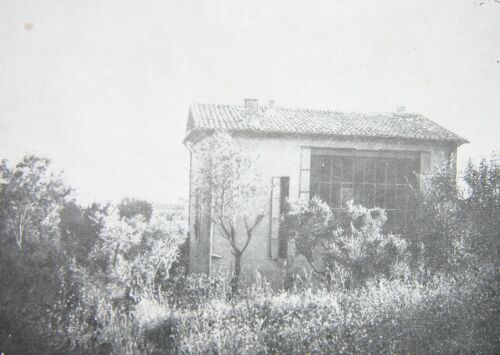Heading off to sleep at 4am last night had me wondering how I would pull up today. Any ambivalence about the readiness of the paintings was countered today by the pleasure of conversations with others whilst musing over how best to hang the work.
You can read details about the when and where of this show at
Studio archives blog - Opening night is friday evening, but doors will be open from tomorrow - so if you are out and about in this sunny city do pop in and have a peek... the work of 10 artists is showing over 12 days. I'll be there Saturday morning for 4 hours from 10 am, Tuesday morning - same hours, and Saturday afternoon next week if you want to come have a tea and a chat... you will be most welcome.
This Gallery happens to be situated in a very lively precinct - a large Antiques Emporium is just up the street - book shops, boutiques, cafes and other galleries nearby. A gorgeous little chocolate shop sells the best, most restorative hot chocolate made from a very special recipe each morning! In fact I must take some photos of the surrounds...a hilly area, with wonderful views and fabulous old Queensland timber houses and lush trees and gardens.
As I nestled into the Gallery's bay window seat next to the wall where my work has been hung... I could not think of a better place to pull up for a little while....especially on these winter mornings where the sun is so gentle.
* click on images to enlarge for viewing!
This work above is shown below in context. The way I chose to hang the show is suggestive of a kind of dispersal of the pod forms featured in all the various works here. For the project I have been carrying out at Mt Coot-tha Botanic Gardens this year I have focused heavily on the forms found in the seed capules of the rainforest fruits native to Queensland. The Black bean motif I have long employed - finding a way to use it as a kind of scaffolding here in some of the works. This motif abstracted consists of 2 of the most essential or primal of forms... ovals and circles have, across Millennia, held enormous cultural significance... speaking to the subconscious mind powerfully and in our time simultaneously resonating with archaic yet contemporary meaning - with a life force still!

Acrylic and pigmented ink is the medium used and the canvas ovals come in four sizes - the smallest being 17.5 x 12.5cm as in the one below which features the hexagonal cross-section of the 'Pararistolochia australopithecurus' - a ribbed orange berry containing these 6 capsules for seeds....not that 6 seeds will always be found in each. That is something I'm still amazed by - despite the capsules that form in readiness to house seeds the number of seeds produced is not a given. Working in the Seed lab had really brought home the issue of seed viability.. pods may be pried open only to discover the absense of seeds non-vialbility of what is present.
The simple geometry of this species is completely uncontrived in this motif... its elemental and repeated in the most obvious of pattern-making. One cannot but help but think how much of this human love of geometry was fostered by saturation in the most common of everyday things in nature. Once upon a time when the human relationship to nature was for many so strong, and matters of survival meant nothing was taken for granted - seed had to be viable or it might spell disaster - plant breeding would have no doubt have come to rely on an almost scientific observation of what was occuring in nature in particular species. Acute observation may have made the critical difference.
My long held fascination with ancient symbols has taught me time and again that the correspondance between the tangible and the abstract was deep-rooted and integral. No matter how sophisticated the tiled floors or wall patterns of antiquity appear - how mathematically complex - without doubt the starting point for a motif might be something as singular as a capsule which held seeds... like this one below. Its pause for thought.
The subtlety of the work below highlights three different seed capsules - each a different rainforest species. This painting ( 35 x 28 cm ) refers to the largely hidden nature of seeds - they are not necessarily seen, more so if we never work with them, plant them, watch them grow. Because of this we can easily forget their mighty role in our lives... their tremendously important role as 'generator of life'. We can remain ignorant of their vast presence in so much that we consume daily... the debt we owe if you like.
And the most critically abundant of habitats for the wealth of biodiversity of these substances we so take for granted iare the rainforests of the world.
My challenge in making works during this year long project "Homage to the Seed" is to find a way to not simply make pictures like one might with a camera. Scientific Botanical Illustration has played and still does play an enormously important role in the research of species and all manner of knowledge. To some it may have appeared simply decorative, certainly exotic and capable of inspiring curiosity, a love of plants and therefore gardening.
Over the year I have researched in libraries and on-line for artistic as well as scientific visual interpretation of plants and ideas around plants.... keen to notice what representation of seeds occured... if any. The formal approach to scientifically presenting a Botanical specimen has often included the cross-section of the pod or capsule to display the structure, the seed - but this is largely secondary it would seem to the external appearance of the species.
Thus common thinking positions Botanical Art as a depiction of the seen form - the external over the internal structures...and certainly not concerned with implying the forces contained within. This is why the extensive work artist Paul Klee carried out on this rich vein of thinking has offered me a deeper strata of response to consider and grapple with.
Klee, influenced strongly by Goethe and a rich immersion from school days in things Botanical - at that time part of the regular school curriculum - went onto delve more fully in the many ways of seeing plants, growth and nature - not just a representation of external reality.
Curiously the thinking of Rudolf Steiner, also majorly influenced by Goethe, had for a time an interest for Klee. Kandinksy is said to have been immersed and stayed with Steiner's teaching whereas my reading suggests Klee left off at some point.
Whatever the case - the notion of internal forces, things unseen, Dylan Thomas's "the force that through the green fuse drives the flower" has engaged my imagination and curiosity extensively and demanded attention over a long period... coming perhaps to fruition whilst focusing more deeply on seeds and paradoxically further exploration into the Scientific realm. Both have been driving agents and both extremely valuable.
This then has lead me to meditations on the place we find ourselves in on the planet at this time, seeking ways to interpret all that I have gleaned to date. The scientific approach..... observation, collection of data, theoretical propositions and such have been important to extract perspective on current concerns re biodiversity and the preservation of habitat and species..
But what then?
What do we humans value?
What do we as a global community care about plants?
What are we noticing and talking about?
What place are we giving this heritage?
Is someone supposed to do that for us?
My list on question goes on...its still shifting and turning. The sense of loss is enormous in the plant heritage of this world - for habitats and for food. Both matter! Both are necessary to our survival....to breathe... to eat ... to have enough nourishment to live ...!
How do we shake our eyes awake? How do we get closer to what matters?
Below are 2 works - the larger one is the cross-section of mangrove seeds in their pod -
Ariceunia marina (if I can read my journal writing correctly). Last year I walked through the boardwalk of a mangrove reserve - 12 kms from my house - on Moreton Bay. These seeds were everywhere at that time... and I picked them up off the path to look more closely before letting them fall into the water.
To think that locations where the mangroves had been decimated on Asian coastlines led to greater destruction by the Tsunami in 2004 is a clear reminder of the relationship between intact habitat and human survival. How wise is it for us to be thinking that because it is ... say christmas ... and we are on holiday, have money to travel and have "deserved"our fabulous holidays that the environment will behave and let us have out nice time in peace.
Ramp up those travel packages where one participates in communities I say... being able to offer one's self, getting to really know locals, volunteering for a time... reading of those who do this seems to equate with the most rewarding of experiences.
I posted on the recent
Tea and Seed Stories day in the Gardens at the homage blog and one of the central observations of the volunteer guides who conducted a children's art event and quiz to identify seeds with pods and foods was that the adults were most urgent to particpate in this quiz and many themselves did not know what they were seeing.
This was not the way once... we used to know where our food originated, and to worry that there would be enough because we knew about that too!
The smaller of the 2 images above is Mackinlaya macrosciadea.
Many of the rainforest fruits I've been investigating this year are not edible, perhaps quite toxic but some able to be treated. Further still, there are myraid uses beyond food sources. I would argue that this kind of knowledge is easily as captivating as wine and cheese knowledge once one gets started, and of far greater significance for the long term. And be assured ... I am partial to a good red and fine cheese!
I will be posting more images and proper titles of works in the next days on the studio archive blog. Congrats if you read all the way to the end of this post ...your bottle of good australian red is in the mail!
You deserve it!








































